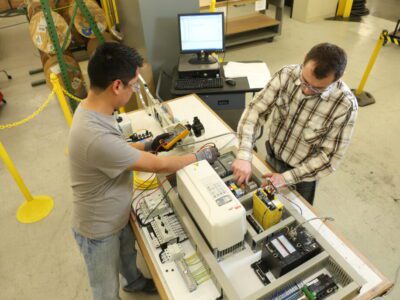But, when just one small part of the mechanism is slightly off, it can cause a dramatic ripple effect that throws the whole box making facility out of balance, resulting in extra expenses on repairs, lost money during downtime, stressed-out employees working long shifts to try to correct the issues and frustrated customers who are not receiving their orders on time.
Machines Need Attention And Care
This might sound obvious, but it’s worth stating as often as possible: Keeping all of these operations running smoothly is not a matter of luck or coincidence – it’s a matter of careful and routine maintenance. Like an annual wellness visit at the doctor’s office, or your regularly scheduled maintenance for your car, this routine maintenance is very easy to perform, but also even easier to skip or overlook. While skipping one checkup or even a few checkups may not hurt immediately, it is an unnecessary gamble, as preventive maintenance is always easier, less urgent, and less expensive than reactive maintenance following a major issue.
What might not be as obvious is how a few extra (often overlooked) steps in your routine maintenance can make a huge difference in how your machines run…and the quality of their output.
Three Simple Tips
Keep your machines and your facility clean
Corrugated manufacturing produces a lot of dust and debris. People who spend a lot of time in these facilities quickly become accustomed to dust and buildup around the facility, but it is important to consider how it can affect equipment. A buildup of dust from the cutting process, for instance, can become caked onto fans, ducts, and other components. This issue is exacerbated by humidity in the facility, either caused by the climate of the facility’s location or humidity inside the plant caused by different types of equipment – namely resulting from the steam from the corrugator.
Modern machines require a lot more nuance and attention than simply walking around the plant floor with a 5-pound mallet. Keeping all operations running smoothly requires careful and
routine maintenance.
It is important to regularly clean the debris off of this equipment, particularly fans. It is also crucial to remember that buildups of dust and other debris can happen in parts of the equipment that are not easily visible to employees, so there must be a directed effort to regularly check for and remove such buildup inside of the machines and in hard to reach spots. It is also important to actually collect the dust when cleaning, as opposed to just blowing the machines down, as blowing the dust simply moves it to another location within the facility. Because most machines are using vacuum transfer, the blown away dust will end up getting drawn back to the machines, making the effort spent cleaning it up a wasted effort.
Lubrication
The origin of the expression “It works like a well-oiled machine” is easy to pinpoint. Proper lubrication is what prevents mechanical components from grinding against each other and breaking or damaging motors, gears, or other delicate and highly important
parts of the machinery. Most plants pay careful attention to lubrication of new machines, but it is easy to forget that older seemingly indestructible machines need to be lubricated on a regular basis as well in order to keep them at their best.
When in doubt, read the manual
Modern machines require a lot more nuanced and attention than simply walking around the plant floor with a 5-pound mallet. With the increased and diversified capabilities of modern machines, along with new components necessary for some of the automation taking place, maintenance teams and facilities managers may be unaware of some of the components and upkeep schedules. It is a great practice to use the OEM manuals to develop a checklist and schedule for keeping things in proper working order.
Uptime is the core focus of machine maintenance. Although equipment does periodically break down without warning, in most cases, issues can be anticipated and prevented with regular maintenance and diligent upkeep.
Over the course of the next five issues, we will highlight a number of different specific ways to keep your equipment in good working order, and ultimately preserve uptime and maximize revenue.
Mark Peyton is the Director of Aftermarket at SUN Automation Group. He brings decades of industry experience and expertise to SUN where he has held many customer-focused positions. Prior to his 20-year career with SUN, he worked from Langston and United. He can be reached at mpeyton@sunautomation.com or 410-472-2900
Originally published in Corrugated Today, January/February 2021 Issue


 Why the Corrugated Industry needs Machine Learning Technology
Why the Corrugated Industry needs Machine Learning Technology